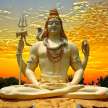
The history of the largest statues in the world crosses centuries, continents, and civilizations. These enormous monuments are frequently built to honor notable people, stand for religious doctrine, or represent cultural ideas. The following are the accounts of a few of the more noteworthy instances:
1. Statue of Unity, India: This imposing statue honors Sardar Vallabhbhai Patel, a pivotal player in the Indian independence fight, and was completed in 2018. At a whopping 182 meters (597 feet) high, it tops China's Spring Temple Buddha, the previous record holder, to become the world's tallest statue. The Statue of Unity, which is situated in the Indian state of Gujarat, is a symbol of pride in the country as well as a display of India's engineering expertise.
2. Spring Temple Buddha, China: The statue from Spring Temple Buddha was the tallest in the world until the Statue of Unity was unveiled. This enormous statue of the Vairocana Buddha is located in the Henan province of China. It is 128 meters (420 feet) tall, including its base. Built between 1997 and 2008, it is a global attraction that is a marvel of engineering and religious devotion.
3. The United States Statue of Liberty: Standing towering atop Liberty Island in New York Harbor, the Statue of Liberty is a representation of democracy and freedom. French sculptor Frédéric Auguste Bartholdi created it, and it was dedicated in 1886 as a gift from France to the United States. The statue is 93 meters (305 ft) tall. symbolizes Libertas, the Roman goddess of freedom, and has greeted innumerable immigrants to the American soil, including its pedestal.
4. Laykyun Setkyar, Myanmar: The Laykyun Setkyar statue, which is close to the town of Monywa in Myanmar, is a reminder of the Buddhist faith and cultural legacy. At 116 meters (381 feet) high, it depicts the Gautama Buddha sitting on a lotus pedestal, surrounded by lesser statues and ornate ornamentation. This stunning statue, which was completed in 2008, is a perfect example of Myanmar's artistic workmanship and deep religious traditions.
5. The Great Buddha of Ushiku, Japan: Measuring 110 meters (360 feet) in height, this imposing bronze statue of Amitabha Buddha is located in Ushiku, Japan. It was finished in 1993 and has an observation deck with expansive views of the surrounding landscape. In addition to being a well-known religious site, the Great Buddha of Ushiku attracts tourists looking for spiritual enlightenment and a chance to experience local culture.
Among other things, these statues serve as magnificent tributes to human intellect, creativity, and spirituality that profoundly influence everyone who sees them.
In honor of the well-known Tamil poet and philosopher Thiruvalluvar, there is a notable monument in Tamil Nadu, India called the Thiruvalluvar Statue. Thiruvalluvar is well-known for his literary masterpiece "Thirukkural," which consists of 1,330 couplets that provide ageless guidance on a variety of topics related to governance, ethics, and life.
The statue is located close to Kanyakumari, on a small island near the point where the Indian Ocean, Bay of Bengal, and Arabian Sea merge to form the southernmost extremity of the Indian subcontinent. The Thiruvalluvar Statue, erected in 2000, is a well-known representation of Tamil ancestry and culture.
The Thiruvalluvar Statue has the following salient characteristics:
Height: The monument itself is 29 meters (95 feet) high and represents the Thirukkural's 38 chapters of "Wealth" (Porul) and "Virtue" (Aram). The height is increased by the pedestal to a total of 40.5 meters (133 ft).
Design: Created by Indian sculptor V. Ganapati Sthapati, the statue shows Thiruvalluvar standing tall and majestically, one hand outstretched in a blessing and enlightening gesture and the other clutching a palm leaf manuscript, symbolizing his literary achievement.
Construction: The statue's towering figure of Thiruvalluvar is created by painstakingly carving and assembling several granite pieces. To finish the structure, expert artisans and engineers were needed, and it took many years.
Location: The Thiruvalluvar Statue is perched on a rocky ledge amid the ocean and provides stunning views of the surrounding waters. From the mainland, visitors can take a ferry to reach the statue.
Symbolism: The Thiruvalluvar Statue represents the teachings and continuing legacy of Thiruvalluvar, which inspire people of all ages, in addition to its artistic and architectural value.
The Thiruvalluvar Statue honors one of Tamil Nadu's most beloved authors. It invites viewers to ponder the eternal wisdom found in the Thirukkural and to be in awe of the technical and artistic prowess that went into creating the monument.






Comments
There are no comments for this story
Be the first to respond and start the conversation.